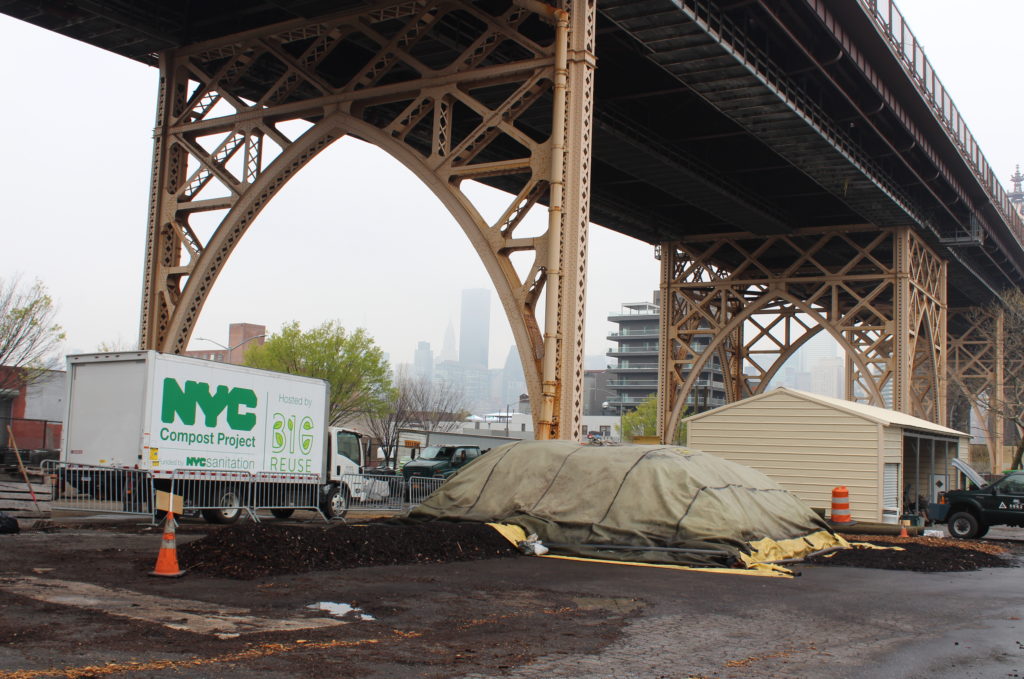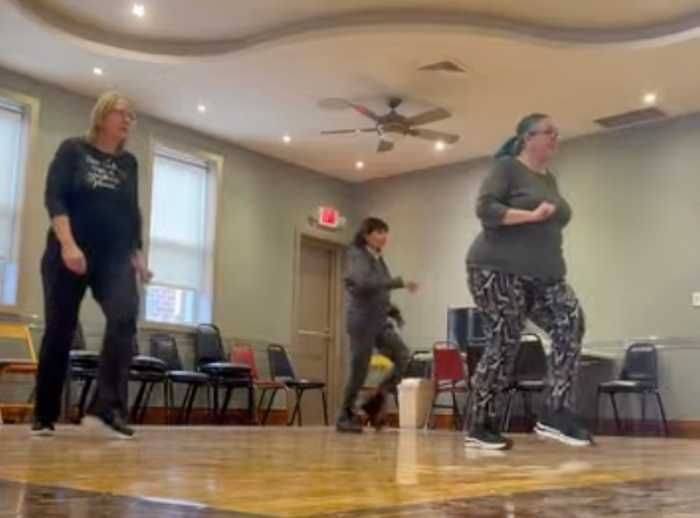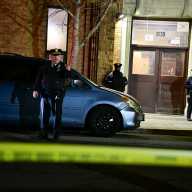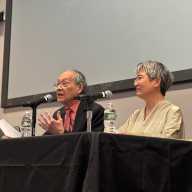A coalition of elected officials and community organizations has launched a petition calling on City Hall, the Parks Department and the Department of Transportation to fully restore Queensbridge Baby Park, an extensive play space for children that opened alongside Queensbridge Houses in 1939.
The online petition, launched by Council Member Julie Won in collaboration with State Sen. Kristen Gonzalez, New Yorkers for Parks, the Hunters Point Parks Conservancy, the Long Island City Partnership and a number of other neighborhood organizations, also calls on the city to convert 15 city-owned sites under and around the Queensboro Bridge into high-quality open spaces.
Advocates say the 15 sites would transform roughly 370,000 square feet of city-owned land into public space.
The majority of sites are located adjacent to Queensbridge Houses and include lots originally used as part of Queensbridge Baby Park, which closed to the public in the 1980s due to work related to lead paint removal.
The Parks Department is currently carrying out extensive renovations at Queensbridge Baby Park to transform the site into an open green space with a seating area, ping pong tables, a paved plaza and improvements to landscaping.
However, petitioners argued that the Parks Department is only renovating a small portion of what was formerly Queensbridge Baby Park and stated that a number of lots that used to form part of the park are currently being used for agency parking and storage.
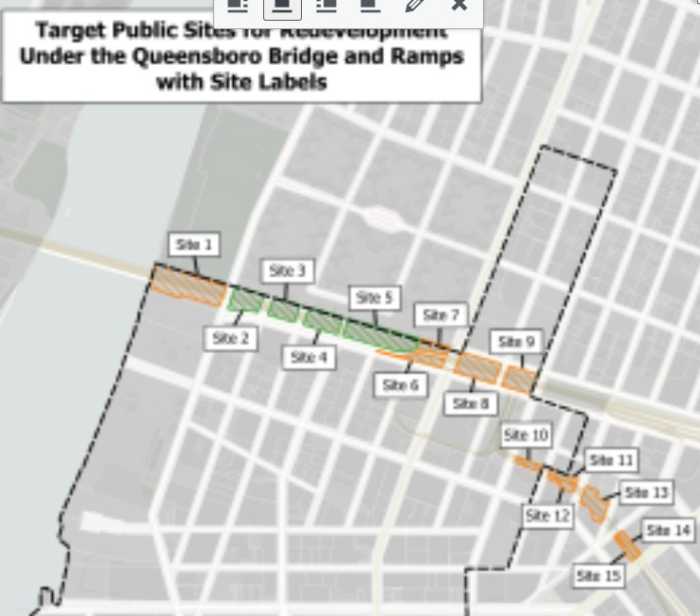
Won had previously called for numerous lots under the Queensboro Bridge to be converted into public space as part of the OneLIC Neighborhood Plan, a massive rezoning proposal that aims to introduce up to nine acres of new open space to Long Island City in addition to nearly 14,700 housing units—4,300 of which would be affordable.
In total, Won called for nine lots under the Queensboro Bridge to be converted into open space, stretching from the East River waterfront to 23rd Street. Won’s Queensbridge Baby Park proposal incorporates six lots, stretching from Queensbridge Park to the eastern side of the Queensbridge Houses complex on 21st Street.
Meanwhile, she also called for six of DOT-owned lots underneath the Queensborough Bridge ramps to be converted into open space.
The online petition echoed those calls, noting that there is currently 8.5 acres of “underutilized” land underneath the Queensboro Bridge.
“New Yorkers deserve vibrant, accessible public spaces — not empty lots, storage yards, and employee parking on prime publicly-owned land,” the petition states.
“In Long Island City, from the East River to Court Square, 8.5 acres of underutilized land under and around the Queensboro Bridge — an area the size of 6.5 football fields — are not usable by the public despite being surrounded by one of NYC’s fastest-growing neighborhoods and adjacent to Queensbridge Houses.”
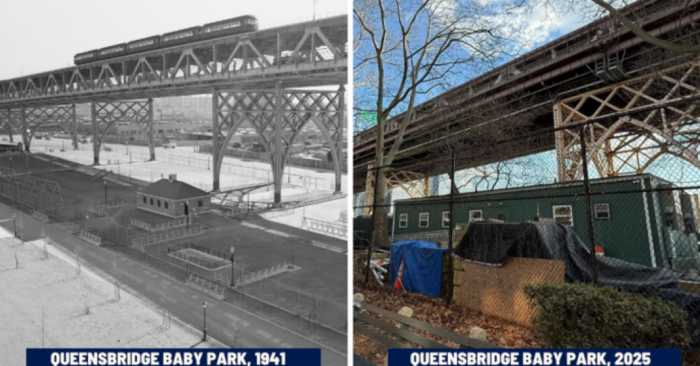
The petition also addresses the Park Department’s efforts to renovate what was formerly Queensbridge Baby Park, stating that the renovations only cover a “small fraction” of the space.
“While NYC Parks is creating a seating area in a small fraction of the space and calling it Queensbridge Baby Park, much more can and should be done to transform the remaining lots under the Queensboro Bridge to open space,” petitioners argue.
In a Aug. 12 statement, Won alleged that Queensbridge Baby Park had been “stolen” from the local Queensbridge community through a “series of racist decisions by the city of New York.”
“It’s time to fully restore Baby Park for children and families and expand open space under the Queensboro Bridge,” Won said in a statement.
The petition, which has received 460 signatures at the time of writing, is roughly halfway toward its 1,000-signature target and notes that residents have been campaigning for the restoration of Queensbridge Baby Park for at least 20 years.
Petitioners, which also include representatives from the Jacob A. Riis Neighborhood Settlement, Urban Upbound, the Floating Hospital and the Court Square Civic Association, described Queensbridge Baby Park as a “once-vital” space for the local community.
“Community calls to restore the area date back to the early 2000s, when residents began speaking out at local meetings and in neighborhood forums about the loss of accessible open space and the growing neglect of land beneath the bridge,” the petition states.
Daniel L. Taylor, a Queensbridge resident who has long advocated for the restoration of Queensbridge Baby Park, previously told QNS that the the former open space was a “vital lifeline” to the local community.
Taylor said the park offered an outlet for his parents, who would take him there when he was a child to play in the sprinklers and use the park’s play areas.
“I learned how to ride my bike and roller skate outside of Baby Park,” Taylor said. “It makes you wonder why the City decided to take away a vital community space and use it for storage.”
Won previously stated that current fencing around many of the lots under the Queensboro Bridge essentially splits Long Island City into two halves and said it was “unacceptable” that the city does not make the space available to the public.
“The lots underneath the Queensboro Bridge must be restored to publicly accessible open space for residents of Queensbridge and the wider community. For far too long, the city has occupied the lots that were originally meant for Queensbridge residents and used the nearby spaces for agency storage and parking,” Won told QNS in a statement in May.
At the time, Won also drew comparisons to the space under the Brooklyn Bridge and how that has been reclaimed for public use in recent years.

The OneLIC proposal covers 54 full or partial blocks from Gantry Plaza State Park to the Queensbridge Houses and north to the Long Island City Industrial Business Zone. The eastern boundary extends to Court Square and 23rd Street. The plan aims to revise outdated zoning regulations to allow for more mixed-use development, increase housing supply, and improve neighborhood infrastructure and resiliency.
The plan has earned the conditional approval of Community Boards 1 and 2 and Queens Borough President Donovan Richards as part of the city’s Universal Land Use Review Procedure (ULURP) and will next go before the City Planning Commission (CPC) for a binding vote on Sept. 3.
If the CPC approves the proposal, the plan goes to the City Council for final approval. The mayor can veto the plan within five days of the Council’s vote.

